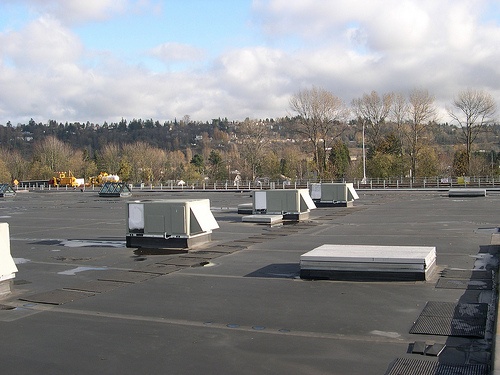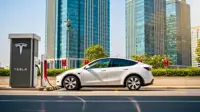Electricity use slashed with efficiency controls for heating, cooling
23 May 2014
Commercial buildings could cut their heating and cooling electricity use by an average of 57 per cent with advanced energy-efficiency controls, according to a year-long trial of the controls at malls, grocery stores and other buildings across the country.
 The study demonstrated higher energy savings than what was predicted in earlier computer simulations by the same researchers.
The study demonstrated higher energy savings than what was predicted in earlier computer simulations by the same researchers.
"We've long known that heating and cooling are among the biggest energy consumers in buildings, largely because most buildings don't use sophisticated controls," said the study's lead researcher, engineer Srinivas Katipamula of the Department of Energy's Pacific Northwest National Laboratory.
"But our tests of controls installed at real, working commercial buildings clearly demonstrate how much more energy efficient air-conditioning systems can be."
This research was supported by DOE's Office of Energy Efficiency & Renewable Energy and the Bonneville Power Administration.
Sitting on the roofs of many commercial buildings are shiny metal boxes containing heating, cooling, ventilation and air conditioning (also known as HVAC) units. These are pre-made in a factory and have all their components inside a box, leading the industry to call them "packaged" HVAC units. Another kind of commercial HVAC, called air handling units, have long used sophisticated controls to ensure they work as efficiently as possible. But packaged units are often allowed to run for hours on end, even if they aren't needed, and receive little maintenance.
Packaged HVAC units consume the same amount of electricity each year as 8 million US residents, or about 2,600 trillion British thermal units of energy. All those ignored and often-inefficient HVAC systems add up, creating higher power bills and contributing to the nation's greenhouse gas emissions.
Putting an idea to the test
Katipamula and his PNNL colleagues have spent their careers thinking up ways to reduce energy use in buildings. In 2011, they set out to adapt the controls already found in air handling HVAC units for use in packaged rooftop HVAC units. The goal was to enable packaged units to automatically adjust their operations based on conditions inside and outside a building. Using sensors and variable-speed motors, the controls decide when and how fast ventilation fans should run, and if the units can use naturally cold air from the outside instead of mechanically cooling indoor air.
While the PNNL team was evaluating how these controls could work, they learned a few companies were simultaneously and independently in the process of developing such advanced controls.
During the summer of 2012, the team installed one of the commercially available control kits on 66 rooftop HVAC units at eight volunteer commercial buildings in Washington state, Ohio, California and Pennsylvania. The buildings included shopping malls, grocery stores, big-box stores and a medical clinic. The installed devices, manufactured by Transformative Wave of Kent, Wash., were chosen because they most closely resembled the advanced controls PNNL had envisioned.
Real energy savings
Katipamula and his colleagues found that, compared to standard operations, the HVAC units using advanced controls cut their energy use by an average of 57 per cent. The actual energy savings ranged from 20 to 90 per cent. Larger buildings such as malls, which need bigger HVAC units, saved more energy than smaller buildings. And buildings that ran ventilation fans more, such as stores open long hours, tended to save more energy.
Translating the energy savings into dollars saved depended on local power costs. Nationwide, energy costs an average of 10 cents per kilowatt-hour, though areas with abundant and inexpensive power supplies often pay less and large cities with greater energy needs generally pay more.
When using the national average, researchers found all the field-tested HVAC units would have saved an average of $1,489 annually per unit. The team calculated it would take a building owner three years to recoup the cost of buying and installing advanced controls with that average cost savings. Commercial buildings often have multiple rooftop HVAC units, so actual savings per building would depend on the number of units used.
But the exact payback period depends on several factors. To help building owners weigh the costs, the research team developed a table that lays out which specific combinations of an HVAC unit's size, the number of hours its fan runs daily and the local energy rate would result in a three-year or less payback period. The team concluded installing advanced controls in smaller units with a capacity of 15 tons or less could achieve a three-year payback in areas where energy costs 12 cents per kilowatt-hour or more, or where sufficient utility incentives were available.
"I'm proud to see the advanced controls my colleagues and I evaluated not only work in the real world, but produce significant energy savings," Katipamula said. "We hope commercial building owners will be inspired by these tangible savings and install advanced controls in their rooftop HVAC units."






.webp)















